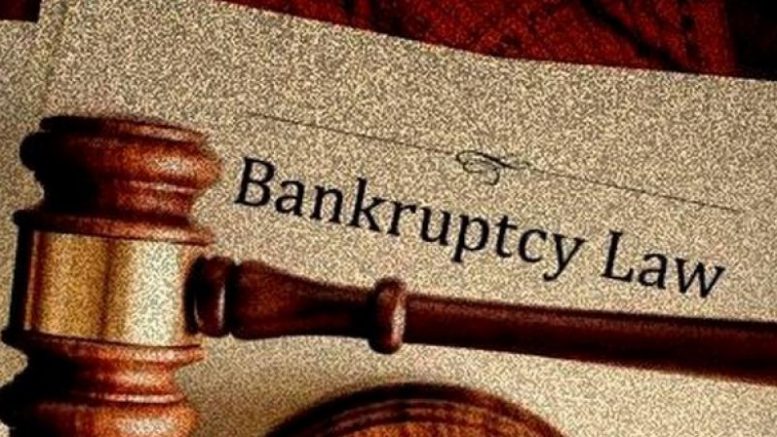Over the next months, India’s newly-constituted bankruptcy courts will decide the fate of 12 companies that account for over a quarter of Rs 8 lakh crore worth of bad loans choking the banking system.
If the bankruptcy moved by India’s banks are accepted, companies with investments in factories, furnaces, trucks, textile looms, heavy equipment, and land will be placed under the supervision of their creditors, and given six months to strike a deal on their debt, failing which these firms will be liquidated.
“You have this new law that’s never been tried before,” said the chief executive of one of these 12 companies. “Maybe, you want to first try it out on a smaller company to see if it works?”
The outcome of these cases will determine if the new insolvency and bankruptcy code (IBC) is a transformative legislation, or just another unenforceable law.
For now, promoters, banks and private equity investors hoping to buy some of these stressed assets are playing a high-stakes game of chicken, to see who blinks first.
Promoters say merely appearing on the RBI’s list of most indebted companies has crippled day-to-day operations. New vendors want to be paid in advance, executives say, and older suppliers want the company to clear all existing dues before providing fresh supplies. Once a company enters bankruptcy, the new law envisages, day-to-day affairs shall be run by a resolution professional appointed by the creditors.
“But will the professional have the experience of running such a steel plant? They’ll hire consultants for everything and fleece the company. Where is the money to run the company going to come from?” the CEO said.
Under the Insolvency and Bankruptcy Code 2016, any creditor with an unpaid payment of Rs 1 lakh can initiate insolvency proceedings against the defaulting company at the National Company Law Tribunal (NCLT).
Day to day affairs are handled by a resolution professional for 6 months while the lenders must agree on an resolution plan.
In case of liquidation, the company’s assets are sold and the proceeds are used to pay-off creditors, workers, suppliers and other claimants.
December 15, 2016 The Insolvency and Bankruptcy Code 2016 came into force
January 17, 2017 The first case was admitted
October 14, 2017 The final outcome of this first ever case is expected
All cases under the new law shall be heard at one of 14 NCLT benches in 10 locations in New Delhi, Ahmedabad, Allahabad, Bengaluru, Chandigarh, Chennai, Guwahati, Hyderabad, Kolkata and Mumbai
The chief financial officer of another company that is technically bankrupt, but still churned out thousands of crores of revenue last year, said the new law should distinguish between companies that “have essentially wound up, and those that are functioning”.
Companies are also concerned about a provision that allows any creditor with a pending debt of Rs 1 lakh rupees to approach the court.
“The question for us is what is our response time to the prospect that just about anybody who is a 1 lakh creditor can initiate proceedings?” asked the general counsel for a large industrial conglomerate. “In a large group like us, there are emails that don’t get answered for 10 days .”
Banker boon
For banks, the credible threat of initiating bankruptcy has been a boon, but complications remain.
“Promoters of these stressed assets wouldn’t talk to us, we wouldn’t see them for days,” said the general counsel for a large private bank. “Suddenly they are outside our doors. We are having conversations with people we haven’t seen before.”
Yet experts warn that the IBC is only one part of a constellation of institutions, regulations and government actions necessary for a credible resolution process.
“At the outset banks will need to decide, is this a fundamentally sound company with too much debt, or just an economically unviable project,” said Harsh Vardhan, a partner at Bain and Company.
In the former case, banks will have to restructure the debt; but if the project is not viable at all, they will have to liquidate the company.
“In either case, the banks will have to take a hair cut, which will erode capital. This will require a credible commitment capital to meet regulatory requirements,” Vardhan said.
A “haircut” is market parlance for accepting that a loan will not be repaid in full. The RBI has directed banks to set aside 50% of loans for companies referred to bankruptcy court; but some economists feel banks should provision for these losses more aggressively.
“If the RBI forces banks to mark the value of defaulting assets to zero, the banks have nothing more to lose, and will then think commercially about how to maximise recoveries,” said Ajay Shah, an economist at the National Institute for Public Finance and Policy. “The problem today is that regulations do not force banks to fairly reflect the market value of bad assets, and this creates a bias in favour of postponing and hiding.”
The RBI did not reply to an HT email seeking comment.
Private equity investors say banks should prepare to get only a small fraction of their money back. A recent report by ratings agency CRISIL estimates that resolving the top 50 biggest defaults will cost banks a 60% haircut, or losses worth Rs 2.4 lakh crores.
“Many of these plants were erected when the economy was growing and prices were booming, since then the cost of equipment has fallen,” said a private equity investor. “This will obviously affect bids.”
Investors are also worried that promoters might sabotage their bids. “When you get in and take over a factory, the previous owner will set the dogs on you,” said the investor, who has dealt with Indian promoters before. “He knows every rule he’s broken, he’ll tip off the local authorities and they’ll raid you day and night.”
Bank officials say they are open to all outcomes, “But if the promoter makes us the best possible offer, why shouldn’t we take it?” asked a senior loans officer with a public sector bank.
The chief concern, the banker admitted, was that promoters might make completely unrealistic promises just to regain control of their companies. “But all decisions will be made in a totally transparent manner,” he said.
“Ultimately, these bids are like game-theory,” said the investor. “We can make a crazy offer, but this is India – there will always be someone with a crazier offer.”





Be the first to comment on "Banking on a new law for answers,NPA crisis"